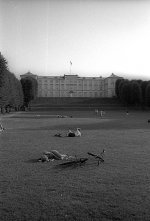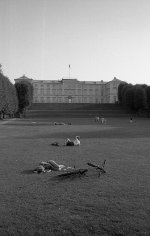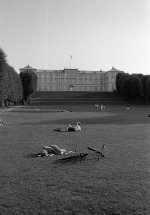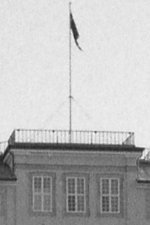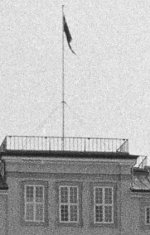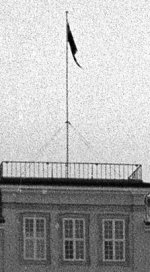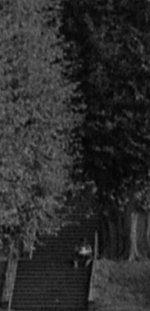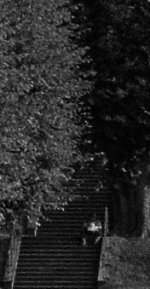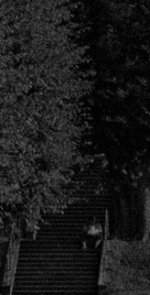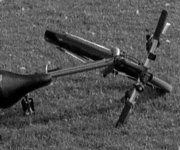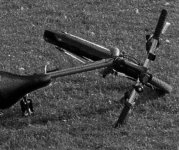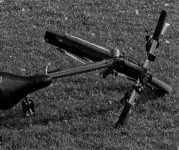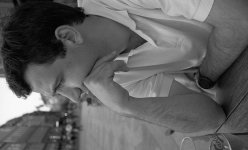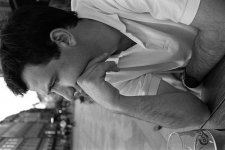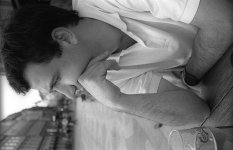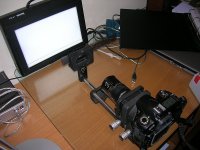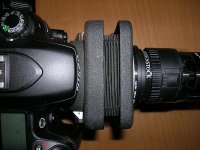jvr
Well-known
Hi!
I don't know if this may be a bit off topic but I bet that a lot of RFF members still shoot film AND own a digital SLR. And it's a long post, so be warned... 🙂
First, let me just say beforehand that I own two scanners, a Nikon Coolscan 4000ED and an Epson 3200 Photo (mainly for MF), so you may ask "Why would I ever use a digital SLR as a scanner, when I have two proper scanners?". Well, the reason that made me try something else was speed. Although my LS4000ED is fast, using a digital camera as a "scanner" is certainly faster. In the past, I used my old Coolpix 880 with the Slide Copier Adapter to quickly "scan" several of my B&W rolls and results were not bad (in fact, much better than I first thought). But, as you'll see below, there was some very positive surprises along the way and quality became the quest... 🙂
Given my earlier tries with the Coolpix, when I bought my first DSLR (a Nikon D100), it was only natural that I tried the same thing but with 6 Mpix and better lenses. I ordered the Nikon ES-1 Slide Copier adapter and I tried the same approach using my Micro-Nikkor 55/3.5 and some extension rings from Kenko. Unfortunatly, the cropping factor of the D100 sensor does not help getting a full-frame slide, so I always got some cropping.
Qualitywise, results were very encouraging but it was not a "perfect" setup. In the meanwhile, I took to scan all my slide collection (10k+) using the LS4000ED and a SF-210 bulk slide feeder, 50 at a time. I used Vuescan (thank you very much, Ed Hamrick, to adapt it to correctly deal with the SF-210 on the LS4000ED!). The ordeal was much easier than I thought or read about (only a few jams in more than 10k slides!) and I was ready to do the same to my B&W rolls (around 150 of them). Helas, a few problems surfaced:
1) The bulk adapter was no good for 6-frame strips. No problem, I have a framing device from Keiser, so I cut and framed a roll to test (it's a strange thing, a B&W negative cut and framed on a slide mount!).
2) The LS4000ED is one hell of a scanner for slides but for B&W it can be desperating. Not only ICE does not work (unless using C-41 B&W films, and I had only a few) but the very "direct" light shows all the "beauty" of the grain (and probably even some more!), plus every dust speck and scracth you didn't even know you had. I had already scanned several B&W negs and I had painstakingly removed all the garbage but doing that for 150 rolls of 36 B&W pictures was out-of-the-question.
3) Although Nikon Scan does a fairly good job scanning B&W negs (with some help!), vuescan needs attention to get good results, especially regarding contrast. So, even with the slide feeder, I would have a LOT of work...
So, I went back to the DSLR scanner idea, now with a D80 that I had bought in the meanwhile.
I was lucky enough to get a PB-5 Nikon bellows unit (with a PS-5 slide copier) for 65€ on a photo second-hand meeting. I tried to use my Micro-Nikkor but miminum bellows extension is more than 50mm: cropping was again an issue. Quality was great. Really, really great: the resolution on the D80 is beter than the D100, shooting JPG is great for contrast ajustment, as the camera does the job for you. And a very good job at that. Light (from a light table) is more diffused, so dust and scratches don't show so much (in fact, a lot less). And no need to cut the negative strips and mount them, the PS-5 takes film (I can even shoot an entire uncut roll of film). After inversion on Photoshop, a plain auto-levels gave me a very good "scan" of my negatives. Exposure is not a big deal: just pop a few bracketing shots until histogram is ok on a representative frame and then use the same for every frame. Dynamic range on a B&W neg is small enough so that there is a lot of room for error (just keep a bit of room on each side of the histogram).
But cropping was a pain, so...
I dug out some Nikon lenses and tried them with a reversing ring. Now I was getting somewhere. Although image quality was not as good as the Micro-Nikkor, I could get very good results with a... 75-150 E series zoom, when used on the 80mm range and stopped down to f11. Quality was more than enough for small prints but I'm a perfectionist, so... What I really needed was something on the 80mm range, at least f5.6 (so that I could use the focusing aid of the D80), that I could mount on the bellows (Nikon mount), good on macro...
Suddenly I remembered I had still had my trusty Rodenstock Rodagon 80/4 enlarger lens. I sold my enlarger but kept the lens (God knows why...). Reversed, the Rodagon should work very well (working distance is ok), flare should not be a problem since the back element is well coated (enlarger lens, light from the back), focal is perfect, flat field. The only problem was mounting it on the bellows. I first tried a DYI fit (using some stuff, including duct tape) and then decided to order a 40.5 to 52 step-up ring and use my Nikon reversing ring on the lens. And it worked like a charm... 🙂
Full-frame is easy (with cropping available), focus is not an issue and the "locking aperture device" is great for focusing (if needed) and quickly set working aperture (ideal for this setup, f8, tested). I'll post a few photos of the rig, if anyone is interested.
Ok, how about image quality in B&W? Very good. It just vaporizes the Epson and it's almost a tie with the LS4000ED. In some ways, it's even better than the LS4000ED (just look at the photos. Epson and Coolscan files were downsampled to the same pixel count as the D80).
But the main advantage is time: after inserting a new 6-frame strip, it takes about 5s/frame, including advancing (by hand) to the next. Scan time, for a f8 aperture, around 1/1.3 seconds. That's less than 8/10ths of second, for a 10Mpix file. My Coolscan is fast but a full frame for the same pixel count is at least 1 minute. And I also have to feed the strip and the scanner has to advance each frame.
Since then, I already "photographed" all my rolls, in infinite less time than using the Coolscan (or the Epson, for that matter). BTW, using mounted slides, the overall time is even less, as taking a slide out and new in into the PS-5 takes less than 3s. Amazing...
My present workflow is like this:
1) Use the D80 on RAW mode
2) Connect the D80 to the PC using Camera Connect
3) Create a new folder for each roll
4) Shoot the roll (the neg RAW files will be placed on the folder)
5) use Photoshop to process the RAW files (auto everything), with an Action that does Invert, Auto Levels (0.01 cut for white and black).
6) Save them as JPG
Fast and very good quality. If I have a very difficult neg, I can go back and convert that one with specific parameters, using the NEF file.
Another option is to use Vuescan on the RAW files. Vuescan reads NEF files with it's option "Scan from file". Every option is available, including adusting contrast with the Film Type option! It also works very, very well (I'm planning to do a re-conversion of all my B&W negative NEFs with Vuescan). And batch control is even easier than with Photoshop.
I started this path looking for a "quick and dirty" solution to get all my B&W negatives on my PC, so that I could then use my Coolscan to do a "proper" scan of the best. The quality I get from this setup is so high it is pointless using the Coolscan, unless aiming for very large enlargements (for B&W negatives. For color slides, the Coolscan is better. But the D80 keeps pace - I'll post a few tests, using a shot of the blank PS-5 as a target for white balancing. An even better choice would be using Vuescan to process RAW files, after creating a profile for the combined D80+light table setup, with an IT8 target).
So, for those who have a DSLR and can get hold of a used bellows and a used enlarger lens, that's definitely the best value-for-money scanner you can get. Even in terms of pure quality, it completely thrashes the Epson 3200 Photo and gives the Coolscan a tough time (even in slides!). In terms of quality/speed ratio, is totally unbeatable, at any price, as far as I know.
Mind you that the results with the D100 in RAW are also wonderful and 6 mpix are more than enough for a lot of things. The JPG processor on the D100 is much worse than the D80 (several years worse, in fact... 🙂 but RAW files are just great.
I'm very happy with this setup and I sometimes wonder why I keep the Coolscan... ;-)
The examples are from a roll of film taken with a Konica Hexar, the names of the files give away the device where they were created. I tried to keep the same size and global balance but it's tough... I include reduced full scans (to get the overall picture and global tone rendering), plus some full size crops. All crops were reduced to the same pixel count as the D80. Anyway, quality on bigger size was not better, believe me...
I don't know if this may be a bit off topic but I bet that a lot of RFF members still shoot film AND own a digital SLR. And it's a long post, so be warned... 🙂
First, let me just say beforehand that I own two scanners, a Nikon Coolscan 4000ED and an Epson 3200 Photo (mainly for MF), so you may ask "Why would I ever use a digital SLR as a scanner, when I have two proper scanners?". Well, the reason that made me try something else was speed. Although my LS4000ED is fast, using a digital camera as a "scanner" is certainly faster. In the past, I used my old Coolpix 880 with the Slide Copier Adapter to quickly "scan" several of my B&W rolls and results were not bad (in fact, much better than I first thought). But, as you'll see below, there was some very positive surprises along the way and quality became the quest... 🙂
Given my earlier tries with the Coolpix, when I bought my first DSLR (a Nikon D100), it was only natural that I tried the same thing but with 6 Mpix and better lenses. I ordered the Nikon ES-1 Slide Copier adapter and I tried the same approach using my Micro-Nikkor 55/3.5 and some extension rings from Kenko. Unfortunatly, the cropping factor of the D100 sensor does not help getting a full-frame slide, so I always got some cropping.
Qualitywise, results were very encouraging but it was not a "perfect" setup. In the meanwhile, I took to scan all my slide collection (10k+) using the LS4000ED and a SF-210 bulk slide feeder, 50 at a time. I used Vuescan (thank you very much, Ed Hamrick, to adapt it to correctly deal with the SF-210 on the LS4000ED!). The ordeal was much easier than I thought or read about (only a few jams in more than 10k slides!) and I was ready to do the same to my B&W rolls (around 150 of them). Helas, a few problems surfaced:
1) The bulk adapter was no good for 6-frame strips. No problem, I have a framing device from Keiser, so I cut and framed a roll to test (it's a strange thing, a B&W negative cut and framed on a slide mount!).
2) The LS4000ED is one hell of a scanner for slides but for B&W it can be desperating. Not only ICE does not work (unless using C-41 B&W films, and I had only a few) but the very "direct" light shows all the "beauty" of the grain (and probably even some more!), plus every dust speck and scracth you didn't even know you had. I had already scanned several B&W negs and I had painstakingly removed all the garbage but doing that for 150 rolls of 36 B&W pictures was out-of-the-question.
3) Although Nikon Scan does a fairly good job scanning B&W negs (with some help!), vuescan needs attention to get good results, especially regarding contrast. So, even with the slide feeder, I would have a LOT of work...
So, I went back to the DSLR scanner idea, now with a D80 that I had bought in the meanwhile.
I was lucky enough to get a PB-5 Nikon bellows unit (with a PS-5 slide copier) for 65€ on a photo second-hand meeting. I tried to use my Micro-Nikkor but miminum bellows extension is more than 50mm: cropping was again an issue. Quality was great. Really, really great: the resolution on the D80 is beter than the D100, shooting JPG is great for contrast ajustment, as the camera does the job for you. And a very good job at that. Light (from a light table) is more diffused, so dust and scratches don't show so much (in fact, a lot less). And no need to cut the negative strips and mount them, the PS-5 takes film (I can even shoot an entire uncut roll of film). After inversion on Photoshop, a plain auto-levels gave me a very good "scan" of my negatives. Exposure is not a big deal: just pop a few bracketing shots until histogram is ok on a representative frame and then use the same for every frame. Dynamic range on a B&W neg is small enough so that there is a lot of room for error (just keep a bit of room on each side of the histogram).
But cropping was a pain, so...
I dug out some Nikon lenses and tried them with a reversing ring. Now I was getting somewhere. Although image quality was not as good as the Micro-Nikkor, I could get very good results with a... 75-150 E series zoom, when used on the 80mm range and stopped down to f11. Quality was more than enough for small prints but I'm a perfectionist, so... What I really needed was something on the 80mm range, at least f5.6 (so that I could use the focusing aid of the D80), that I could mount on the bellows (Nikon mount), good on macro...
Suddenly I remembered I had still had my trusty Rodenstock Rodagon 80/4 enlarger lens. I sold my enlarger but kept the lens (God knows why...). Reversed, the Rodagon should work very well (working distance is ok), flare should not be a problem since the back element is well coated (enlarger lens, light from the back), focal is perfect, flat field. The only problem was mounting it on the bellows. I first tried a DYI fit (using some stuff, including duct tape) and then decided to order a 40.5 to 52 step-up ring and use my Nikon reversing ring on the lens. And it worked like a charm... 🙂
Full-frame is easy (with cropping available), focus is not an issue and the "locking aperture device" is great for focusing (if needed) and quickly set working aperture (ideal for this setup, f8, tested). I'll post a few photos of the rig, if anyone is interested.
Ok, how about image quality in B&W? Very good. It just vaporizes the Epson and it's almost a tie with the LS4000ED. In some ways, it's even better than the LS4000ED (just look at the photos. Epson and Coolscan files were downsampled to the same pixel count as the D80).
But the main advantage is time: after inserting a new 6-frame strip, it takes about 5s/frame, including advancing (by hand) to the next. Scan time, for a f8 aperture, around 1/1.3 seconds. That's less than 8/10ths of second, for a 10Mpix file. My Coolscan is fast but a full frame for the same pixel count is at least 1 minute. And I also have to feed the strip and the scanner has to advance each frame.
Since then, I already "photographed" all my rolls, in infinite less time than using the Coolscan (or the Epson, for that matter). BTW, using mounted slides, the overall time is even less, as taking a slide out and new in into the PS-5 takes less than 3s. Amazing...
My present workflow is like this:
1) Use the D80 on RAW mode
2) Connect the D80 to the PC using Camera Connect
3) Create a new folder for each roll
4) Shoot the roll (the neg RAW files will be placed on the folder)
5) use Photoshop to process the RAW files (auto everything), with an Action that does Invert, Auto Levels (0.01 cut for white and black).
6) Save them as JPG
Fast and very good quality. If I have a very difficult neg, I can go back and convert that one with specific parameters, using the NEF file.
Another option is to use Vuescan on the RAW files. Vuescan reads NEF files with it's option "Scan from file". Every option is available, including adusting contrast with the Film Type option! It also works very, very well (I'm planning to do a re-conversion of all my B&W negative NEFs with Vuescan). And batch control is even easier than with Photoshop.
I started this path looking for a "quick and dirty" solution to get all my B&W negatives on my PC, so that I could then use my Coolscan to do a "proper" scan of the best. The quality I get from this setup is so high it is pointless using the Coolscan, unless aiming for very large enlargements (for B&W negatives. For color slides, the Coolscan is better. But the D80 keeps pace - I'll post a few tests, using a shot of the blank PS-5 as a target for white balancing. An even better choice would be using Vuescan to process RAW files, after creating a profile for the combined D80+light table setup, with an IT8 target).
So, for those who have a DSLR and can get hold of a used bellows and a used enlarger lens, that's definitely the best value-for-money scanner you can get. Even in terms of pure quality, it completely thrashes the Epson 3200 Photo and gives the Coolscan a tough time (even in slides!). In terms of quality/speed ratio, is totally unbeatable, at any price, as far as I know.
Mind you that the results with the D100 in RAW are also wonderful and 6 mpix are more than enough for a lot of things. The JPG processor on the D100 is much worse than the D80 (several years worse, in fact... 🙂 but RAW files are just great.
I'm very happy with this setup and I sometimes wonder why I keep the Coolscan... ;-)
The examples are from a roll of film taken with a Konica Hexar, the names of the files give away the device where they were created. I tried to keep the same size and global balance but it's tough... I include reduced full scans (to get the overall picture and global tone rendering), plus some full size crops. All crops were reduced to the same pixel count as the D80. Anyway, quality on bigger size was not better, believe me...


